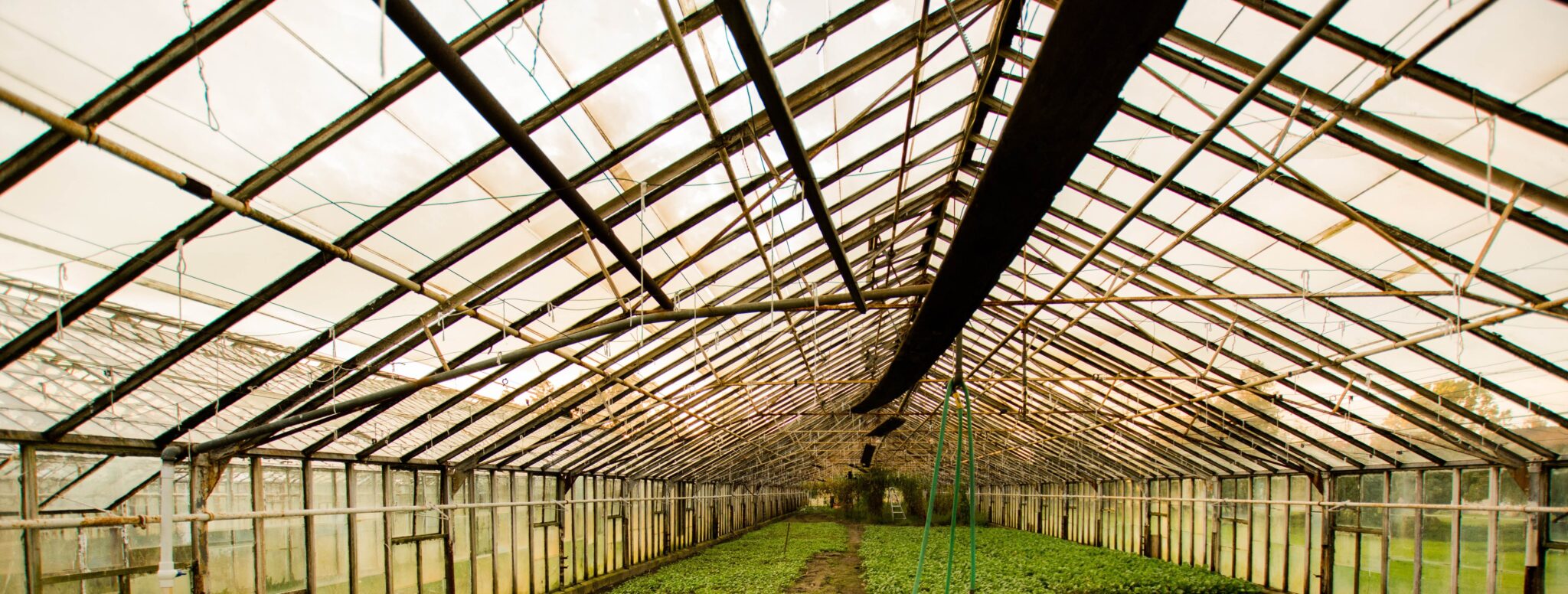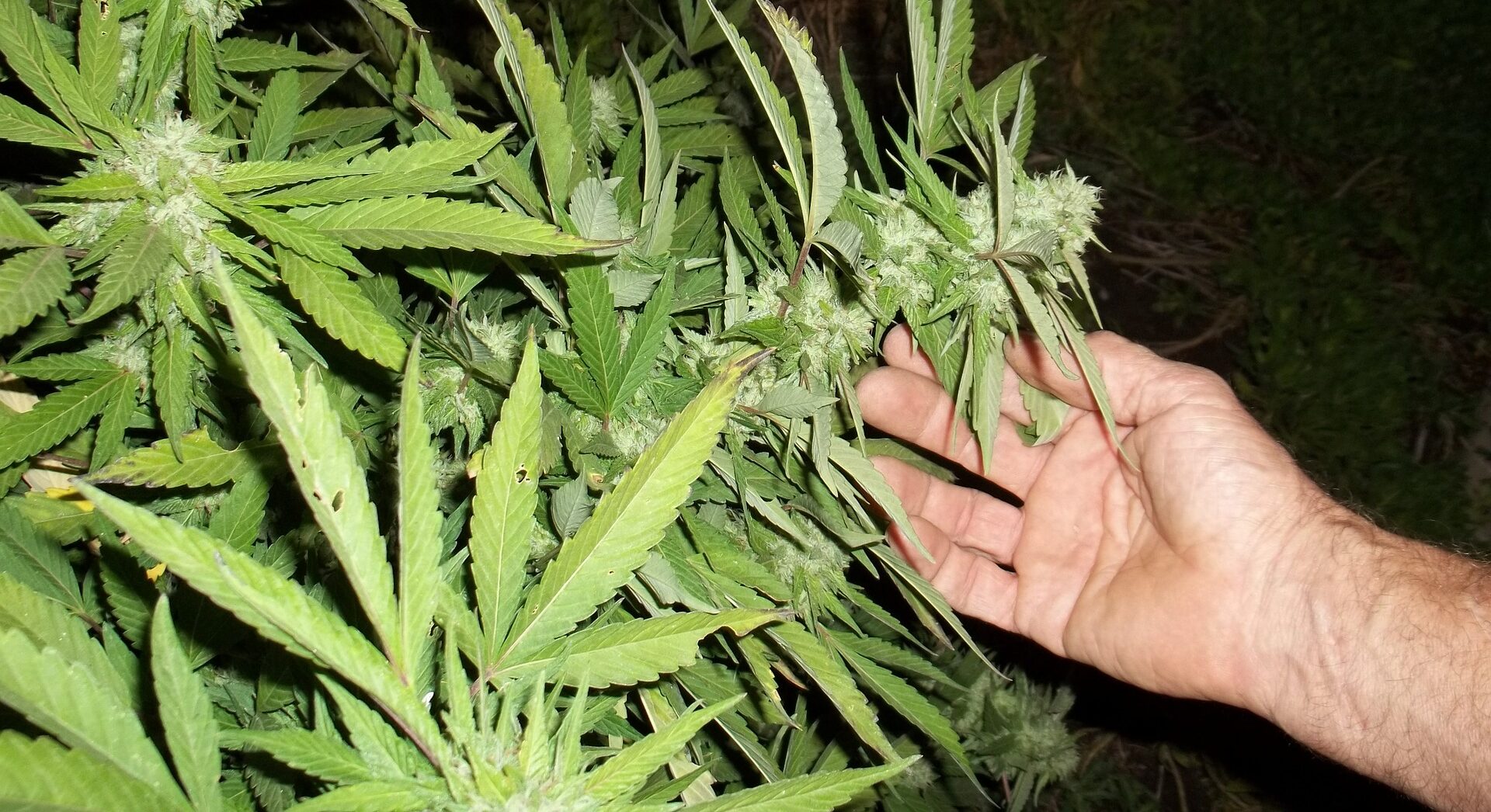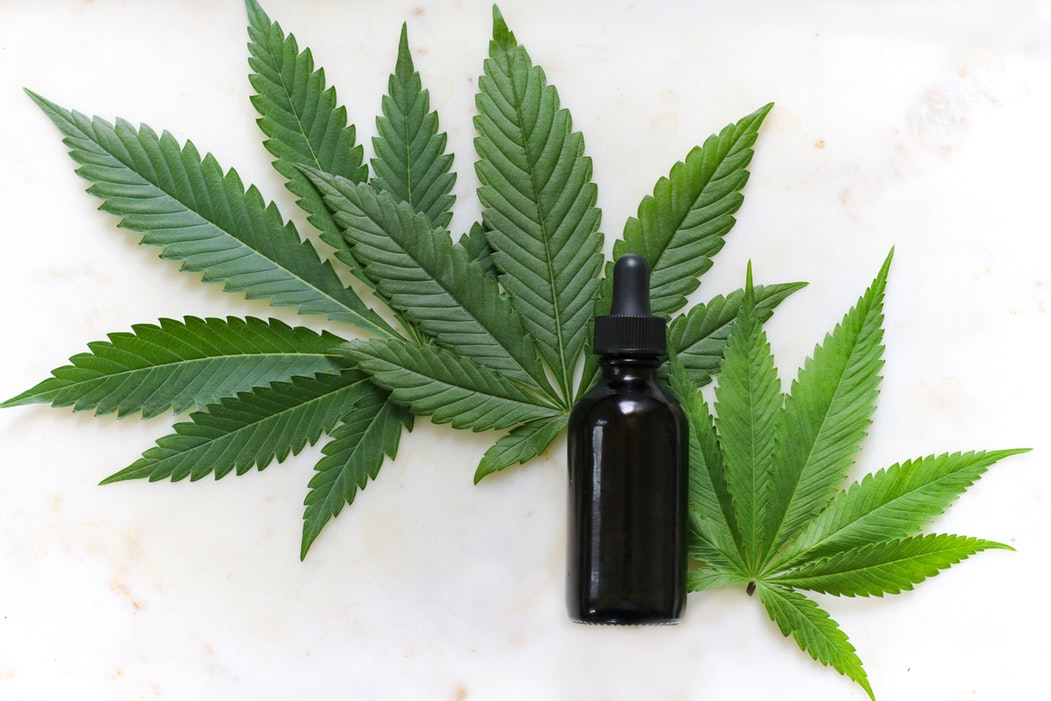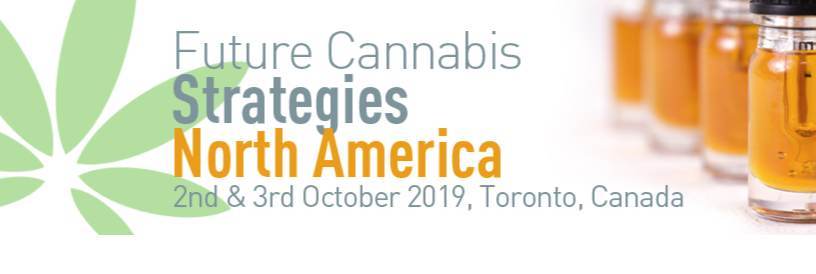How Secure is AirMed Software?

AirMed seed-to-sale software is a Cloud-based platform hosted in a third-party, Tier 3, SSAE 18 SOC1/SOC2 compliant, hardened data center in Canada, and all data remains in Canada. The same data center is used by Canadian banks and government agencies to secure their web-based applications. All data in AirMed is protected by fully managed and monitored enterprise firewalls and intrusion detection/prevention systems.
All communication between the browser and the server is encrypted using SSL. Sensitive data is additionally encrypted while at rest in the database. When a barcode is scanned, the resulting code is input into a field within the web browser. This data is then encrypted and sent to the server for processing.
Administrators can configure access based on an employee security profile so that individual workers only have access to the functions and data that relates to their job responsibilities. Electronic signatures and multi-factor authentication ensure only authorized users can access information and complete tasks. Full audit trails for every record and every action in the system allows administrators to review changes anywhere at any time.
All data is backed-up both locally in the data centre for near-line recovery and to a secure offsite location in Canada for disaster recovery purposes.
To learn more about AirMed’s privacy and security, contact us today by using the contact form or by clicking the Request Demo button at the top of the screen. You can also give us a call at 1-877-313-2442.
New BC Cannabis Sales Programs Announced for 2022

September 30, 2020, Victoria, BC: The British Columbia provincial government announced new sales programs to benefit cannabis producers and Indigenous businesses.
A media release yesterday announced that cannabis producers in B.C. will have greater access to local retailers and consumers, thanks to new direct delivery and farm-gate sales programs that are in development by the Provincial government.
These changes come as a result of input and recommendations from long-time cannabis growers, Indigenous leaders and other stakeholders. The government is giving Health Canada-licensed small-scale producers, including nurseries, the option of delivering cannabis directly to licensed retailers.
“We’ve heard clearly how important these kinds of sales are for smaller cannabis producers trying to get a foothold in a market currently dominated by larger players,” said Mike Farnworth, Minister of Public Safety and Solicitor General. “Now more than ever, our government is committed to supporting B.C. businesses and encouraging people to buy local, and that includes creating conditions for cannabis businesses of all sizes to succeed.”
The Province has also promised to develop a farm-gate sales program that will give cannabis growers in B.C. the option to sell their products from storefronts located at their production facilities.
The targeted launch for these new programs is 2022.
The BC Ministry of Attorney General’s Liquor Distribution Branch will also launch an Indigenous Shelf Space Program. This program, expected to start sometime in 2021, is designed to help consumers easily identify products from local Indigenous producers in BC Cannabis Stores.
“These steps will help grow the legal cannabis industry in B.C. in an inclusive way,” said David Eby, Attorney General. “By making it easier to know more about the product, those who choose to use cannabis can make careful decisions about what types of product they want to buy and what sectors of the industry they want to support.”

(Image / BC Liquor Distribution Branch)
The ‘highlighted’ products should be available at private B.C. cannabis retail locations, as well as through the government-run BC Cannabis Stores online site.
For more information contact:
Ministry of Public Safety and Solicitor General
Media Relations
250 213-3602
New sales programs to benefit cannabis producers, Indigenous businesses | BC Gov News
AirMed Compliance Documents for Health Canada Cannabis License Applicants

The Cannabis Act requires that license applicants provide information on how they expect to meet certain compliance requirements.
We offer full support throughout your license application process and provide documentation that outlines how AirMed meets Health Canada requirements. If you plan to use AirMed for compliance after you are licensed, you submit the documents we supply as part of your application. We also partner with specialists in licensing applications and business management if you need more help.
For applicants who expect to use AirMed to help meet compliance, we provide two comprehensive documents designed for submission with license applications.
AirMed Record Keeping Compliance: This document provides an overview of how AirMed provides support to enable a licensed producer to be compliant with the record keeping & reporting requirements of the Cannabis Act and Regulations (CAR) and the former Canadian Access to Cannabis for Medical Purposes Regulations (ACMPR). This document is intended to assist compliance auditors and internal compliance leaders in assessing readiness in relation to CAR requirements, as well as security and privacy standards.
AirMed Good Practices Compliance: This document provides an overview of how AirMed provides support to enable a licensed producer to be compliant with the good practices requirements of the Cannabis Act and Regulations (CAR).
For more information or to purchase our compliance documents, please call 1-877-313-2442 or email info@airmed.ca. You can also fill out the contact form in the footer.
For more information on how AirMed helps you meet compliance, visit our Compliance page or our Frequently Asked Questions page.
Cannabis Helps Canadian Agriculture Industry in 2020

According to the newspaper Moosejaw Today, Statistic Canada reported farm cash receipts of $16.7 billion increased 5.2 per cent in 2020 over 2019.
The newspaper article, published September 13, 2020, stated, “Without a 62 per cent increase — $685 million — in cannabis sales, farm cash receipts would have increased a mere .8 per cent… Led by surging cannabis sales, farm cash receipts in the first half of the year bucked the general decline caused by the coronavirus.”
To read the original article, visit: https://www.moosejawtoday.com/local-news/cannabis-steers-healthy-increase-in-agriculture-income-2706446
AirMed Recognized as Underlying Technology Software for Cannabis Sector

In a recent article by venture capital company Canopy Rivers, AirMed was recognized as one of the foundation vendors of seed-to-sale software. In a ‘market insights” post, Ben Futoriansky, an Associate in Business Development at Canopy Rivers, described specialized cannabis technology suppliers as “picks & shovels” for the sector.
“The sector-agnostic use case of many technology-driven innovations has led to software becoming the foundation in various industries. Following decades of prohibition and patchwork regulations, many established software solutions have not yet been applied to the cannabis sector. This has paved the way for specialized cannabis…”
To read the full article, visit Canopy Rivers.
Why you need seed-to-sale software for your cannabis business
 Introduction
Introduction
Seed-to-sale software tracks plant production from reproduction through growth, harvesting, drying, packaging, sales and distribution. Health Canada mandates record keeping for every part of the process, and Canadian seed-to-sale software applications focus on compliance built on Health Canada’s regulations.
Record keeping is an essential part of Health Canada’s compliance regulations. From the advent of legal medical marijuana in Canada, legal producers of cannabis have been required to track every seed, rooted plant, gram of waste material, final dried product, as well as interactions with customers. Due to the sheer volume of information, an electronic record-keeping system is the only practical way to manage the process. The software industry has responded to this need by creating seed-to-sale management software systems designed to help producers track their operations and report to Health Canada to meet compliance.
As a Health Canada applicant, you must specify the name of the software system you plan to use for record keeping and provide a summary of how the software program meets Health Canada’s requirements. As a result, you will need to make at least preliminary decisions into seed-to-sale management software early on in your application process.
This might seem like one more challenge along your path to becoming a licensed producer, but in reality, seed-to-sale software is designed to help you be successful.
Seed-to-sale software platforms should provide the electronic record keeping required to not only for you to meet compliance, but also to help you be successful in your business. From greenhouse to warehouse to customer, your software system should help you at every stage of your operation. Functionality for genetics tracking, inventory management, quality control, shipping & receiving, point-of-sale ecommerce, compliance auditing & reporting, and customer relationship management can provide you with full business administration.
Licensing
To do business in the cannabis industry in Canada, you must meet Canada’s licensing requirements. Currently there are several types of licenses for those wishing to carry out cannabis-related business in Canada.
- Standard Cultivation
- Micro-cultivation
- Nursery
- Standard Processing
- Micro-processing
- Sale
- Analytical Testing
- Research
Regardless of which class of license you get, you will be responsible for complying with all the regulations that apply from the various levels of government.
The Laws
The Cannabis Act
Formerly called the ACMPR, this act covers all aspects of cannabis in Canada from growing through processing to selling and more. It is the responsibility of the licensee/applicant to understand and meet all the requirements that apply to their business.
Other Federal Acts and Regulations
As a licensee or applicant, you are responsible for complying with requirements of other Canadian acts and regulations such as the Food and Drugs Act (FDA), the Pest Control Products Act, the Fertilizer Act, among others.
The Canada Revenue Agency
You’ll also need to meet requirements of the Canada Revenue Agency depending on which activities will be conducted with cannabis.
Provincial or Territorial Legislation
As a licensee or applicant, you’ll be responsible for complying with all applicable provincial or territorial laws and regulations (environmental laws, for example).
Municipal By-Laws
As well, you’ll need to deal with municipal by-laws such as zoning and building permits.
How can seed-to-sale software help?
From the advent of legal medical marijuana in Canada, legal producers of cannabis have been required to track every seed, plant, gram of waste material, final product, and more. Due to the sheer volume of information, an electronic record-keeping system is the only practical way to manage the process.
The software industry has responded to this need by creating seed-to-sale management software designed to help businesses meet compliance. Seed-to-sale software tracks growth, harvesting, processing, packaging, sales and distribution.
And some seed-to-sale software systems go beyond compliance to help businesses cultivate success with features and functionality to help fine-tune propagation, growth cycles, harvesting, production, derivatives, inventory, staffing, and product sales. AirMed is one of those. Wherever your business fits in the seed-to-sale supply chain, AirMed can help with both legal compliance and business acumen. For a free demo, call 877-313-2442, email info @ airmed.ca or fill out the form on our contact page.
For information on cannabis licensing in Canada visit: Cannabis Licensing Application Guide
For more information on purchasing seed-to-sale software, fill out a form to download our complete buyer’s guide: Seed-to-sale Software Buyer’s Guide
Thanks for visiting us at Lift Vancouver!

We’d like to thank everyone who visited the AirMed booth at the Lift Expo at the Vancouver Convention Centre last week. Thanks for taking the time to get to know us. It was a pleasure to meet you! We had a great time at the show and hope you did too.
We demonstrated our seed-to-sale software live on site and introduced many of you to out AirMed Ecosystem, a turn-key compliance and business solution for micro-producers. We had tablets, environmental sensors and more in the booth.
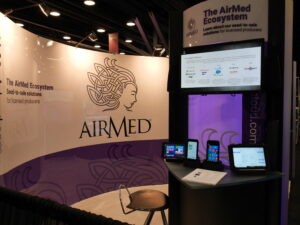
To help cannabis producers, big and small, cultivate success, AirMed has developed strategic partnerships with leading vendors of products and services in the Canadian cannabis industry. From compliance consultants through equipment manufacturers to telecommunications and finally delivery services, we’ve partnered with the best in the industry. For more information about our partners visit: AirMed Ecosystem
To schedule an AirMed software demo, email info@airmed.ca or call 1-877- 313-2442.
Visit us at Lift Vancouver 2020 next week

The Lift Vancouver 2020 Conference & Expo is just one week away and we’re busy getting ready. Being held January 9 through 12 at the Vancouver Convention Centre, the Lift & Co. Conference and Expo is Canada’s largest cannabis expo.
Featuring hundreds of exhibitors from around the world, renowned speakers, and the movers and shakers in the global industry, the Lift & Co. Expo is Canada’s biggest event for cannabis consumers, industry professionals, investors and media.
Visit AirMed in booth #1230 in the expo hall throughout the conference for a demo of our cloud-based seed-to-sale software. And be sure to ask about our AirMed Ecosystem, which lets you purchase hardware and software in a turn-key solution for your cannabis business. From compliance consultants through tablet, sensor, scale and printer manufacturers to telecommunications and finally delivery services, AirMed has partnered with the best in the industry.

Business Conference Thursday, January 9, 2020, 8 AM – 7 PM
The Lift & Co. Cannabis Business Conference (LCBC) brings together leading experts from across the industry to tackle subject matter from a uniquely Canadian perspective. This exclusive, all-day conference incites discussions around both the fast-growing medical and adult-use cannabis markets, as well as how Canadian businesses are in a position of leadership on the world stage. Meet fellow players or find your niche in this fast-paced global industry.

Expo Industry Day Friday, January 10, 2020, 10 AM – 6 PM
Our industry-only trade show day offers focused opportunities for cannabis professionals to kick-start meaningful conversations, relationships and deals. Whether you’re an established business owner, cannabis company employee or industry-curious entrepreneur, we encourage you to engage with fellow exhibitors in this exclusively professional environment.
Expo Consumer Day Saturday, January 11, 2020, 10 AM – 6 PM
Featuring over 200 exhibitors from Canada and around the world, and speakers including the industry’s most knowledgeable and inspiring movers and shakers, the Lift & Co. Expo is Canada’s signature event for cannabis consumers, professionals and investors.
For more information about the conference or to purchase tickets online, visit: Lift Expo
To schedule a specific time to meet with our team during the expo, email info@airmed.ca or call 1-877-313-2442.
See you in Vancouver!
Just four weeks until Lift Vancouver 2020

The Lift Vancouver 2020 Conference and Expo is just four weeks away.
Being held January 9 through 11 at the Vancouver Convention Centre, the Lift & Co. Conference and Expo is Canada’s largest cannabis expo.
AirMed will join exhibitors from around the world, renowned speakers, and the movers and shakers in the global industry at the Lift & Co. Expo, which is Canada’s biggest event for cannabis consumers, industry professionals, investors and media.
Visit AirMed in booth #1230 in the expo hall on Friday January 10 and Saturday January 11 for a demo of our cloud-based seed-to-sale software. And be sure to ask about our AirMed Ecosystem, which lets you purchase hardware and software in a turn-key solution for your cannabis business. From compliance consultants through tablet, sensor, scale and printer manufacturers to telecommunications and finally delivery services, AirMed has partnered with the best in the industry.
Business Conference Thursday, January 9, 2020, 8 AM – 7 PM
The Lift & Co. Cannabis Business Conference (LCBC) brings together leading experts from across the industry to tackle subject matter from a uniquely Canadian perspective. This exclusive, all-day conference incites discussions around both the fast-growing medical and adult-use cannabis markets, as well as how Canadian businesses are in a position of leadership on the world stage. Meet fellow players or find your niche in this fast-paced global industry.
Expo Industry Day Friday, January 10, 2020, 10 AM – 6 PM
Our industry-only trade show day offers focused opportunities for cannabis professionals to kick-start meaningful conversations, relationships and deals. Whether you’re an established business owner, cannabis company employee or industry-curious entrepreneur, we encourage you to engage with fellow exhibitors in this exclusively professional environment.
Expo Consumer Day Saturday, January 11, 2020, 10 AM – 6 PM
Featuring over 200 exhibitors from Canada and around the world, and speakers including the industry’s most knowledgeable and inspiring movers and shakers, the Lift & Co. Expo is Canada’s signature event for cannabis consumers, professionals and investors.
For more information about the conference or to purchase tickets online, visit: Lift Expo
To schedule a specific time to meet with our team during the expo, email info@airmed.ca or call 1-877-313-2442.
See you in Vancouver!
Meet AirMed at Lift Vancouver Expo January 10-11, 2020

AirMed will join exhibitors from around the world, renowned speakers, and the movers and shakers in the global cannabis industry at Lift Vancouver 2020. The Lift & Co. Expo, being held January 9-11 at the Vancouver Convention Centre, is Canada’s biggest event for cannabis consumers, industry professionals, investors and media.
Visit AirMed in booth #1230 in the expo hall on Friday and Saturday for a demo of our cloud-based seed-to-sale software. And be sure to ask about our AirMed Ecosystem, which lets you purchase hardware and software in a turn-key solution for your cannabis business. From compliance consultants through tablet, sensor, scale and printer manufacturers to telecommunications and finally delivery services, AirMed has partnered with the best in the industry.

Business Conference Thursday, January 9, 2020, 8 AM – 7 PM
The Lift & Co. Cannabis Business Conference (LCBC) brings together leading experts from across the industry to tackle subject matter from a uniquely Canadian perspective. This exclusive, all-day conference incites discussions around both the fast-growing medical and adult-use cannabis markets, as well as how Canadian businesses are in a position of leadership on the world stage. Meet fellow players or find your niche in this fast-paced global industry.
Expo Industry Day Friday, January 10, 2020, 10 AM – 6 PM
Our industry-only trade show day offers focused opportunities for cannabis professionals to kick-start meaningful conversations, relationships and deals. Whether you’re an established business owner, cannabis company employee or industry-curious entrepreneur, we encourage you to engage with fellow exhibitors in this exclusively professional environment.
Expo Consumer Day Saturday, January 11, 2020, 10 AM – 6 PM
Featuring over 200 exhibitors from Canada and around the world, and speakers including the industry’s most knowledgeable and inspiring movers and shakers, the Lift & Co. Expo is Canada’s signature event for cannabis consumers, professionals and investors.
For more information about the conference or to purchase tickets online, visit: Lift Expo
To schedule a specific time to meet with our team during the expo, email info@airmed.ca or call 1-877-313-2442.
Cannabis Expo Ottawa: November 23 & 24, 2019 at Shaw Centre

With the advancement of legalization, the Cannabis Expo is an important step in showing the world the professionalism and maturity of the expanding industry. Join industry leaders from across Canada in an interactive forum educating on the latest technology, research and benefits of cannabis. Don’t miss comprehensive networking opportunities while exploring industry related exhibits as we build the foundation for the future of Cannabis in Canada.
For more information visit: Cannabis Expo Ottawa
New AirMed version lays groundwork for October 17 Cannabis Act changes

A new version of AirMed seed-to-sale software was released October 16, 2019. This is a substantial build that lays the groundwork for the October 17 changes to the Cannabis Act and CTLS reporting.
The new version offers significant updates to the Received Products section of the cloud-based application including the ability to receive into the facility any type of product (edibles are coming soon) either bulk or packaged. The system now allows product to be transferred to a processor and packaged up, then the packaged material can be received back into the facility.
For received products, users now have the ability to add items to an existing lot, back-date inventory adds, and update finished/unfinished designation for new Health Canada regulations. We’ve also added an extraction material type category for new Cannabis Tracking and Licensing System (CTLS) reporting requirements, plus the ability to move all plants in batch and print a timeline report for batch details.
If you are a current AirMed customer, please explore the new features in your sandbox service, and let us know if you have any questions by contacting your customer service representative.
To learn more about the Cannabis Act in Canada visit: What you need to know about cannabis – Canada.ca

For more information on how AirMed helps your cannabis business, visit our Software page or our Frequently Asked Questions page. If you’d like to discuss your specific needs, please give us a call at 1-877-313-2442 or use one of the contact forms to start the ball rolling.
Cannabis Education Today: October 22, 2019 in Vancouver

Cannabis Education Today is an inclusive Canadian Conference & Expo series that brings together all health care professionals including physicians, nurse practitioners, pharmacists, nurses and specialists for a full day of neutral education on cannabis. Learn from experienced experts and clinicians offering evidence-based cannabis education, including the treatment and management of all patients ranging from recreational to medical users. Attendees will learn from top industry speakers and clinicians, as well as have the opportunity to network and discover new products on our dynamic trade show floor.
Cannabis Education Today is being held at the Vancouver Convention Centre East, Vancouver, Canada on October 22.
For more information visit: Cannabis Education Today

Vancouver Convention Centre
Future Cannabis Strategies North America Conference: Oct 2-3, 2019 in Toronto

Future Cannabis Strategies North America brings together strategic business leaders from across the wider North American Consumer-Facing Cannabis products category, this includes CBD/ Cannabis Products & Devices, Beverages, Tobacco, Cosmetics & Nutraceuticals, together with solution providers for 2 days of insight, discussion and debate into how manufacturers can:
- Capitalise on Canada’s legalisation on the sale of edibles, extracts and topicals: expected no later than October 17th 2019
- Spotlight growth in International markets including the UK, Mainland Europe & South America
- Understand consumer trends & demands from across North America
- Identify opportunities to introduce Cannabis/ Hemp infused products into existing Consumer Packaged Goods (CPG)
- Review recent product innovation to understand how market trends are adapting to consumer demands
This is a strategic event designed for those who have commercial or strategic responsibility. This is not a scientific or medical research focused event, but a platform to share best practise and meet solution providers to allow International CPG manufacturers to ensure they comply with regulation, and to increase sales across global markets. The event heavily focuses on identifying opportunities within the European & North American markets and spotlights regulation to ensure producers and retailers of cannabinoid products operate legally.
This event discusses topics including: Product Launches, Regulatory Affairs, Government Policy, Business Opportunities, Quality Testing Methods & Marketing Practices.
For more information visit: Future Cannabis Conference
Grow Up Conference 2019: Sep 12-14 in Niagara Falls

Being held September 12-14, 2019 in Niagara Falls, Ontario, Grow Up Conference and Expo is focused on the education, collaboration and growth of the cannabis growing industry. Meet licensed producers, suppliers, equipment manufacturers, investors, lawyers, government officials and growing enthusiasts – all in one magnificent location.
This is an exclusive ticketed event, aimed at professionals looking to expand their knowledge and network in Canada’s fastest growing industry.
The 2-day industry conference includes an opening keynote, panels and sessions, exhibition area, exhibit networking café, networking party and coffee breaks.
Learn from the professionals with the Grow at Home Workshop created for the recreational user that wants to learn how to grow at home, legally, safety and responsibly.
For more information visit: GrowUp Conference
Lift Expo Europe 2019: Sept 5-6 in Berlin

Lift & Co. Cannabis Business Conference Goes Global!
Taking place in Berlin on September 5-6, 2019 at the Berlin Congress Centre, the inaugural LCBC Europe leverages Lift & Co.’s established role as the nexus of the Canadian cannabis industry to bring international stakeholders together to help shape Europe’s emerging business landscape and policy framework.
For more information visit: Lift Expo
World Cannabis Congress 2019: Jun 16-18 in Saint John, New Brunswick

The World Cannabis Congress (WCC) is an exclusive, invite-only event for international cannabis leaders, influencers and trend setters. The guest list is thoughtfully curated, so conversations and connections made here have a lasting impact worldwide.
Building on the success of last year’s overwhelmingly successful inaugural Congress, global cannabis leaders, change agents, C-suite business executives, researchers, scientists and policy-makers will once again inspire and motivate delegates with more thought-provoking experiences. Hosted in historic Saint John, on Canada’s renowned East Coast, this year’s Congress will be bigger and bolder.
For more information or to be apply to be invited visit: World Cannabis Congress
Lift Expo Toronto: June 6-9, 2019

Featuring over 200 exhibitors from across North America and Europe, main stage talks by cannabis thought leaders, live cooking and growing demos, and a cannabis career fair, the Lift & Co. Cannabis Expo is your chance to learn more about the fast-paced world of cannabis.
On June 6, the Lift & Co. Cannabis Business Conference allows you to tap in to the epicenter of cannabis thought leadership, bringing together some of the most highly-respected researchers, thinkers and business leaders in a range of formats, including keynotes, panel discussions and networking sessions.
On June 7, the day before the consumer weekend begins, cannabis professionals participate in Lift & Co.’s Industry Day, when exhibitors and others in the industry can network and engage in business development before the general public hits the show floor.
The consumer weekend happens June 8 & 9. Here you’ll explore new products, take in the latest scientific research, discover how cannabis culture and public policy are evolving for the future, and so much more.
For more information visit: Lift Expo
Canadian Cannabis Summit 2019: May 30-Jun 1 in Calgary

The Canadian Cannabis Summit is the most innovative, helpful conference you can attend if you are budding or seasoned professional looking for opportunity and education within the emerging Canadian Cannabis Industry.
Learn from experienced cannabis professionals working within a variety of industries.
Gain valuable insight on cannabis technology, science & medicine, retail, banking, investment, marketing, political policy, and Canadian law.
Attain a deeper knowledge on Cannabis business development, as well as the strategy of operating a legal Canadian cannabis business.
Hear from the people pioneering and shaping the forthcoming legal Canadian cannabis industry.
For more information visit: Canadian Cannabis Summit
What happens with my seed-to-sale software if regulations change?

The market for cannabis is evolving. Health Canada manages oversight and sets the compliance requirements for legal production of cannabis in Canada. In the last five years, these requirements have changed multiple times and are set to change again with the legalization of cannabis for recreational use on October 17, 2018. A responsible software vendor will ensure that all its clients have the information they need to comply with the latest Health Canada requirements.
With SaaS or cloud-based seed-to-sale platforms, software updates are usually global to all clients/users. On-site implementations sometimes require individual upgrades performed by the client in conjunction with the vendor. Often this means scheduling both parties, which can delay access to the latest features and functionality. If there are modifications for specific clients, this can mean a complicated upgrade path with the risk of unintended software bugs and related down time or additional costs to re-customize.
As you choose your seed-to-sale software solution, be sure to consider the future of compliance and those implications on your business. No one knows for sure what the future holds, but history has shown that the only true constant is change.
For more information about the Cannabis Act in Canada visit: What you need to know about cannabis – Canada.ca
For more information, download our software buyer’s guide here: How to Purchase Seed-to-Sale Software



